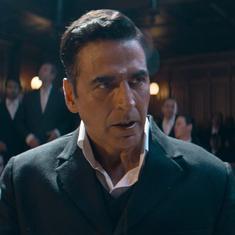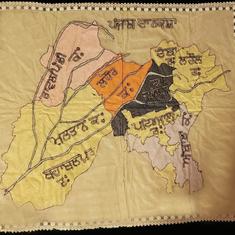Know only your beginning and middle
While writing Charlie, Presumed Dead, I discovered that half the fun of writing a thriller was surprising myself at every turn. Sure, I knew the broad strokes plot going into it: Two girls meet at their shared boyfriend’s funeral, and travel around the globe unlocking his secrets. I had a dramatic premise and a journey in mind – but I initially had no idea where the journey would take my protagonists.
It’s great fun creating a list of “maybes” as you go (i.e. “maybe Charlie was blackmailing Aubrey!”) and concocting a variety of reasons why and how that scenario might occur. I didn’t know how Charlie would end until I was writing the final chapters – I figured if I were still guessing, the reader would be too! I always keep a separate document filled with hypotheticals, then use these imagined scenarios if and where they work.
Write chronologically
You might have an idea for a scene that you have to get out right away, while it feels fresh. This is generally fine if it contributes to character development more so than plot. I have in the past written other of my novels out of order; but I’ve found that with a thriller, there are so many threads that it’s challenging to keep them straight. Each chapter builds on the previous; so writing in order, generally speaking, makes it far easier to keep track of the plot(s) – likely you’ll have many interlocking threads to tie up.
Don’t be afraid of placeholder beats
One of the best pieces of advice I received from a friend as I started writing Charlie was that you have to know your general framework, but you don’t have to fill it in…yet. Don’t put pressure on yourself to know everything right away.
For example, if you hit a point in your story where you know there needs to be conflict between two characters – but you don’t yet know what that conflict should be – it’s okay to write in, “TK CONFLICT” (TK is editor speak for “to come”) or “TK SECRET.” Or even, as I sometimes did, “CHARLIE BETRAYS LENA.” Sometimes mapping your book in post-it notes helps you visually organize these “beats” – i.e. significant plot points – so you can see where your action slows and recognise when something’s missing.
Stop writing when you know what happens next
Here’s another piece of advice that I got from a writer friend long ago – always stop when you’re ready to write your next scene. That way, when you wake up the next morning, you’ll get right to it rather than feeling stumped. And your brain will be fresh and awake, allowing further exciting developments to generate organically. This is especially important when it comes to thrillers, which are essentially complex puzzles you’re creating for another person to solve. Gotta keep that brain sharp!
Make each scene count
Every single scene – and this goes for all books, not just thrillers – should contribute some key ingredient to the plot. Even if it is as simple as relationship-building, there can be no filler scenes. With thrillers, it’s important to keep a fast pace so tension and stakes are high. Try to include a clue, red herring, or small detail that will mean something down the road in every chapter.
For me, this was as simple as an object that a character carried that I knew would become significant later. I’d write in the object, include a hint of the character’s relationship to that object (perhaps Aubrey’s hands tighten around her journal when Charlie is near, demonstrating secrecy and possessiveness) and make a note to myself to bring that object or clue into the story later. This doesn’t always work, since books naturally take their own twists and turns – but the more frequently you do it, the easier it’ll get, and the more unpredictable your story will be.
Lie. A lot!
When I started writing Charlie, I thought: “I am not a naturally devious or wily person. How will I mastermind a sociopath’s evil scheme?” Daunting, eh? Not so! I soon realised that unreliable narrators were my friends.
I wove in lies and betrayals at every turn! I made sure my characters were never certain whether they could fully rely on one another. Unreliable narrators can be frustrating for readers to deal with – but in the best examples of thrillers that include unreliable narrators (Gone Girl, The Girl on the Train), it is the author, not the protagonist, that the reader must trust. As long as the author seems like she knows what she’s doing, a reader is more inclined to forgive an unreliable narrator and enjoy the ride.
Give each character a mini-mystery
In Charlie, Presumed Dead, the primary mystery centers on Charlie and what happened to him. Overwhelming feedback to a first draft revealed that my beta readers needed more. In order for Lena and Aubrey not to seem inordinately obsessed with their lying boyfriend, they needed their own, separate motivators. After all, why would they go to the trouble of hunting down a huge jerk who ruined their lives… unless they had other reasons. These other reasons became Lena and Aubrey’s hidden agendas, or mini-mysteries.
Break all the rules
Don’t stick to what’s familiar. Push boundaries. Do that thing that scares you. For me, this was writing Charlie’s voice in second person. Some people didn’t like it, some did – but it was important to me to set Charlie apart; and boy, did that weird second-person voice make him creepy! His chapters very quickly became my favorite scenes to write.
End on a cliffhanger
Your thriller should shock right up to the very end. Of course, aim for some sense of resolution so your readers don’t feel let down. But the fun of a thriller is the surprise of the reveal. When I was a writing tutor back in college, one popular tip for ending academic theses was to pose a question in the final paragraph. I try to follow that same advice in my novels: end on a question mark!
Anne Heltzel, a New York City-based book editor and a graduate of the New School's MFA program, is also the author of Circle Nine and The Ruining (written under the pen name Anna Collomore). Anne lived in India from September 2009 to December 2010 and she hopes to return as soon and as often as possible. She lives and writes in Brooklyn.










